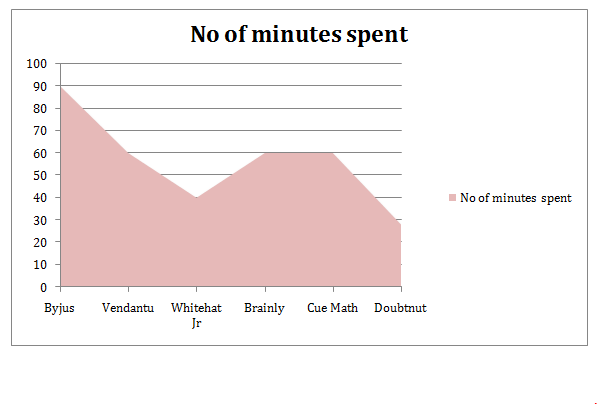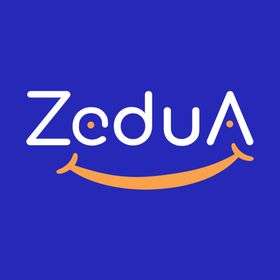
Online learning platforms: Effects of Technology on Education

If there is one sector, which has seen a massive spike in this pandemic, it is the education sector. Online learning platforms have changed the meaning of education for many and it is also the reason for agitation in many parents. In this article, we wish to shed some light on the effects of technology on education; Ed tech companies statistics and many more…
The sudden change in the education industry, all thanks to the pandemic, has paved way to the technology into classroom teaching. This is the cause of the worry for most parents. At Zedua, we had conducted a survey beginning of the online classes; ‘No Online class’ had won hands down. The main reason for it was the rapid increase in the screen time.
Surprisingly, in our study recently we found that the same parents are voluntarily, willing to pay and use these Ed Tech platforms. We were taken aback and decided to dig deeper.
Ed tech startups in India have seen a massive boom during the lock down and this led to a heated debate. On one side we have the Ed-tech companies, coming up with amazing Online learning platforms to close the teaching-learning gap. On the other hand we have a bunch of education enthusiasts saying, not all is hunky dory with this technology and we need to take a hard look at it. And there are child psychologists explaining us the ill effects of too much screen time and the dark side of education technology.
Read – Importance of Technology in Education-Children of the internet-age
It is true that as kids we all have experienced peer pressure and the need to do well in the class and the rat race for the highest marks. At least this was limited to our classroom. Now, the same peer pressure and the pressure to do well have crossed all geographical boundaries. Each kid is competing with the world. Every other kid is a competitor and the pressure to do well in classroom, in the Ed tech applications is more than ever.
In this article, we present to you some facts, statistics, views, opinions and suggestions. Read on, and do let us know your views on the same.
Let us look at some numbers:
Ed tech apps in India saw a meteoric rise in the user base during the lock down. Some companies even saw a 100% growth since the month of March.
We present the statistics of this extraordinary growth of Ed tech application boom in India, even during these unprecedented times.
Number of user base for each of these Ed tech platforms is represented in the chart below

The report by BARC India and Nielsen reveals 30% increase in the time spent on the online education since the lock down.
 No doubt that these Ed Tech platforms are a great learning media. New and captivating content, video teaching which are much more effective, one on one session with the teachers and learning at your convenience.
No doubt that these Ed Tech platforms are a great learning media. New and captivating content, video teaching which are much more effective, one on one session with the teachers and learning at your convenience.
There are over 196 million students enrolled into the schools, this suggests that the market space is really huge and these companies have tremendous potential to bring them all under technology arm.

Aakanksha Kothari
In the light of the above numbers, we have spoken to Aakanksha Kothari, Founder –Azaad Panchi
(Internationally Certified Heal Your Life -Trainer), Counselor, and Child Psychologist, to try and understand how does technology impact student learning and what is the impact of ed-tech application on kids.
What do psychiatrists tells us about this?
- What is the ideal screen time for the kids?
According to me the ideal screen time after a- lot of research is said that is 2 hours and this must include all screens.
As parents and facilitators if we could cut that further down it would really help in the other developmental factors.
Factors like writing skills, conversations, experience based learning would mean alot and if the education system could change its patterns of assessment then a lot more possibilities open up to explore learning as well as teaching.
- Online learning platform for kids, how does affect them physically and mentally?
Physically
- All the time stuck to one place in their in room- being alone,aloof,to ones self.
- Peer Groups missing out on social skills and building friends.
- They loose out on feeling important relationships and feeling various emotions.Be it empathy, sharing, caring which are all part of the school developmental program.
- Also if students may be physically present in front of the laptop most of the time videos are off and the facilitator has no idea if they are being able to relate to the matter taught.
- Its a huge challenge to bring the facilitator to understand if the child is himself going through any issues at home,they could be domestic violence, issues between parents, conflicts between mother and grand mother and may be the child bears the brunt of this etc. any other issues may be present- which may go unnoticed.
Mentally
- The child may want to move around run explore the environment.
- Mentally he may not be in a mood to sit and work at home.
- He may have TV as a distraction constantly runningas his grandparents may be home.
- A fail of routine as just the video is off children do tend to take it for granted.
- How do we bring this awareness to the parents about the ill effects?
I think first of all parents need to explore different methods of keeping children involved at home.
Secondly if the education system could alter its methods and we have a more comprehensive method rather than a mere intelligence based on how much you could recall on the exam day.
Thirdly if we could convert the assessments into practical approach and in regular life what could be applied on a regular division, it would be great.
Definitely some training on children and how to mold them as parents and how they could be involved and contribute to their learning from the earliest stages of life would help.
- Is there a need for these apps?
I think if we could have more comprehensive methods and if the method of teaching could be an experience in real life then the apps needs automatically would go down.
- What are the parents’ feelings when they go for these apps?
I guess before children, parents go to the apps first.
As they themselves have no idea about how to go about teaching their children.
Secondly the vastness of portion fears them for the competition outside.
Thirdly parents want to provide the best for their child and his growth must not be stopped just because they have no knowledge, schools are not able to meet the children’s’ demands cause portions and pressure on teachers are too much.
Ultimately parents have no option but to find tutorials or apps.
Increasing gap
Right to education is one of the main mottos of our country and right from our independence, we have various policies from our government, to ensure that every kid gets the right to education. We have seen duringthis pandemic how the rural India suffered to mitigate this learning gap. Various viral videos and photos have been circulated in the social media, where parents selling the basic necessities to buy devices for their children.
While there is definitely a positive and negative impact of technology on education, some of the statistics cannot be ignored.
Let us look us at some of the statistics of rural India.

India is hugely populated country with 1.3 billion people, where 67% of Indian population is in rural India. Out of 196 million school children, a whopping 146 million are from rural India.
While this is a huge opportunity for the online learning platforms, it also raises some serious concerns. The rural population is not financially and technically strong enough to pay and use these apps. So, we fear this may also create a huge gap between urban and rural kids, thereby snatching the level playing field for the future citizens of this country.
To know how technology help students to learn, to understand more about the competency of the syllabus in India, need of these apps and how schools can help close this gap.

We spoke to Dr Shunila Joy Chauhan (Principal of Thakur International School – IGCSE and A levels).
Dr. Shunila is a multi talented multi dimensional powerful personality. She has been conferred with various awards. With her positive and dynamic attitude she has helped many women led ventures and she believes in empowerment of women through education and breaking all barriers.
Here is a what she has to say:
- We have seen a sudden surge in the Ed tech applications. Why do you think this is? Is the school curriculum not enough?
Dr.Shunila: There’s been a big surge in Ed tech companies because they are trying to fill the gap, which was there in our real time teaching. Initially they got visibility because of the complete lockdown and subsequent online teaching that begun. Many Ed tech companies offered free resources and apps to help the education industry so that learning wouldn’t stop. It was a win-win situation for schools and companies as both were looking at continuity in education and companies made students dependent on these apps.
The ease of accessing education at a click, interactive videos and the ease of studying as per the timing of the students made this popular with students and parents. The school curriculum is extensive but the gamified aspect and interactive videos make Ed tech companies more attractive to children nowadays who are being offered so much variety to learn concepts.
- How can the schools give confidence to the parents that they are well equippedto train the children?
Dr. Shunila: Schools need to be transparent and include parents in attending workshops with their children to understand that schools, children and parents need to work together. In a school a child learns not only academics but social skills and the entire personality of a child is largely groomed at school.
Parents need to be included in different activities in schools so that they have the confidence that schools are equipped to train their children. With the present Covid situation, since parents have got more involved a greater understanding has emerged between parents and schools.
- With so many different styles of teaching a concept (with online learning platforms), do teachers find it difficult to teach in the classroom? And does it affect the learning in any way?
Dr. Shunila: Different styles of teaching using technology have emerged and helped teachers to make online learning meaningful for learners. It can be seen that students are engaged due to apps like Padelette, seesaw, Edmodo, Kahoot etc. to name a few. The impact has been more positive than negative. However, whatever method is used, a teacher needs to master it before trying it with students and then monitor their usage.
- Has these online leaning platforms, widened the gap between the rural and urban students? What are your suggestions to close this gap?
Dr. Shunila: The rural areas have been severely impacted due to lack of devices and therefore online teaching is not very successful with them. A lot of important academic time has been wasted awaiting a solution.
To close the gap the government along with NGO’s need to up skill teachers in technology. Computer or phones should be available to learners and teachers. Along with that electricity needs to be made available without disruption and subsidized in these areas.
The country needs to reflect seriously on this issue else the negative impact will be felt both economically and socio-emotionally on people.
How to close this gap?
With the New Education Policy 2020(NEP) that was released a month ago, there is a wave of freshness in the education sector. A new enthusiasm and a new energy, but does it covers all that is covered in the Ed tech applications.
The recent ongoing debate on ‘coding’ is one such thing that really needs introspection. There are always two sides to a coin. First set of people say that coding is not necessary at such young age and second set saying that we need to equip our children. We at Zedua want to add to this, ‘Coding’ should not be about learning new programming language, and rather it should be about logical reasoning.
As written by Yuval Noah Harari in his book ‘Sapiens’
“Is it likely that most of what you currently lean at school will be irrelevant by the time you are 40… My best advice is to focus on personal resilience and emotional intelligence.”
So, it’s really the question of equipping our kids to ‘Learn’ and ‘Relearn’.
We should be focusing on developing the emotional capability of our kids, focusing on these passion and interest, focusing on the EQ(Emotional Quotient) that enable them to learn at any age.
Conclusion
As a Greek philosopher once said, “Change is the only constant”. We human beings adapt to change faster than anything. This pandemic surely taught us that. However, when a new change is introduced, we should analyze, understand and really choose what is good for the greater good of humanity.
With so much of negativity around and so many instances of wrong doings at young age, EQ is the need of the hour. Moral values, positivity, calm and peaceful mindset is all that is needed now. Humane in Humanity should be brought back.
Kindness, valuing self, honesty, generosity and serving others should be valued more than coding, competition, technology etc;
Sincerely hoping some Ed tech startups in India bringing in an app to teach values into the young minds.
Read – Innovation in Education: Beyond the Technology Perspective
Recomended Blogs

In recent times, there has been a noticeable surge in cases of viral fever, causing concern among both

Zedua
1 year ago

It indeed is not easy to learn something new! Getting out of your comfort zone and learning something

Zedua
2 years ago

Is your child a team player? In today’s episode, we talk about the Importance of interpersonal relat

Zedua
3 years ago

“Thank You so much for uploading such an amazing blog.
I have learnt alot from this.
For more information checkout https://www.elcindia.org/
Online learning platforms have revolutionized the way education is delivered and have had a profound effect on the way students learn. National Public School has been one of the pioneering institutions to embrace this technology and to successfully offer online classes to its students.